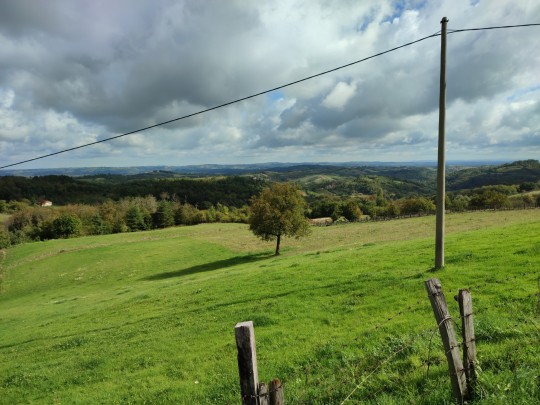#sumadija
Text


"овде су кости - here are the bones" graveyard in a village borač, vicinity of knić, serbia.
#graveyard#cemetery#serbia#slavic#balkan#eastern europe#orthodoxy#eastern orthodox#knic#borač#kragujevac#sumadija#central serbia
220 notes
·
View notes
Text


lepota
#photography#analog#photographers on tumblr#la vie en rose#original photographers#analog photography#photooftheday#la vie est belle#original photography blog#photography on tumblr#la vie boheme#la vita è bella#la dolce vita#indie#retro#girly#vintage#bohemian#boho#bohostyle#bohochic#aesthetic#rudno#srbija#serbia#sumadija#kraljevo#golija#mountains#may
86 notes
·
View notes
Text

MANASIJA MONASTERY - SERBIA
97 notes
·
View notes
Text
Uniqueness expressed through earrings
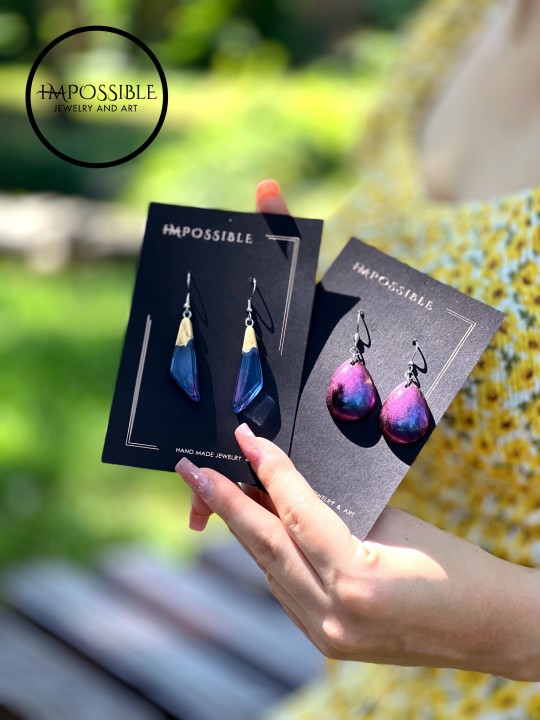
#impossiblejewelry#jewelry#earrings#handmade#srbija#krusevac#serbia#fotografija#sumadija#minđuše#gift for sister#resin#epoxy#nails#cute nails#photography#photo#photoshoot#nakit
6 notes
·
View notes
Text
Oplenac – tamo gde kraljevi počivaju, a istorija živi





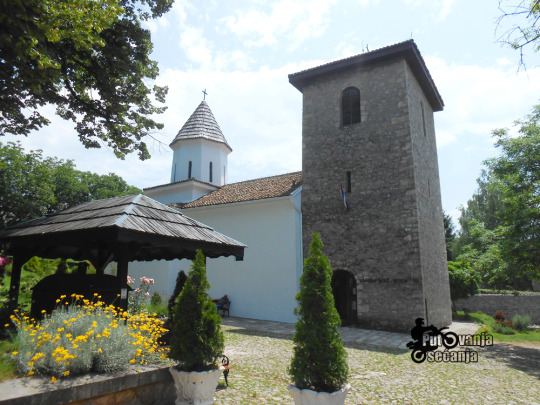

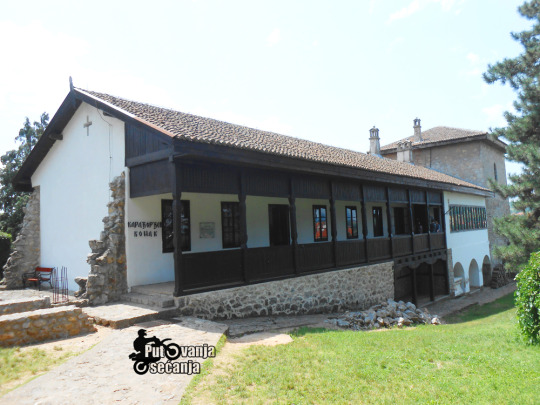

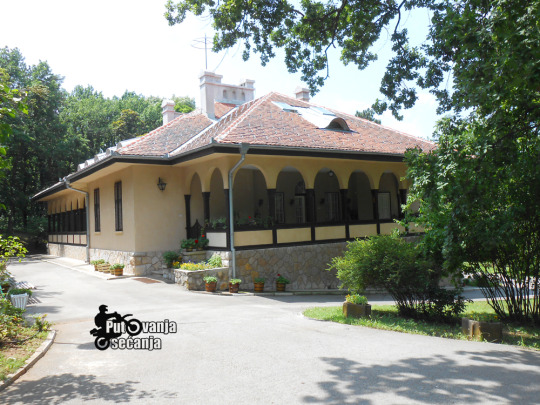

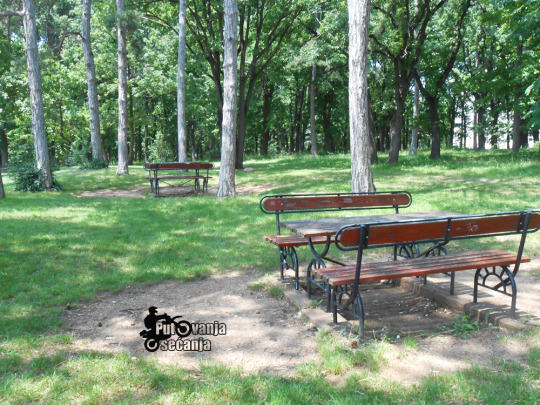

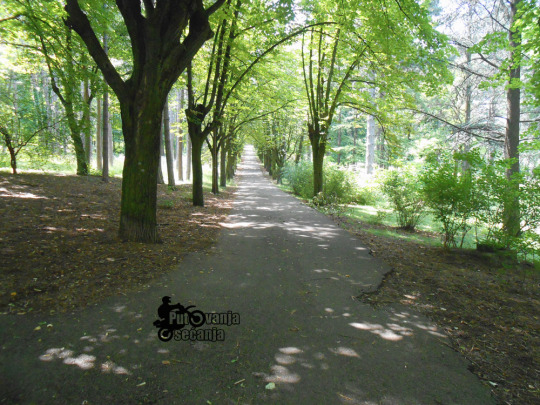
Pored toga što su se na ovim prostorima odigrali mnogi istorijski događaji, ovaj kraj Šumadije je posebno zanimljiv po tome što je jedna cela kraljevska dinastija našla spokoj u veličanstvenom hramu svetog Đorđa, na vrhu brda Oplenac. U srcu Šumadije, na Oplencu kraj Topole, veliki srpski vožd Karađorđe podigao je prve vinograde, a kralj Petar I Karađorđević spomen crkvu i mauzolej dinastije Karađorđević....#serbia #serbiaphoto #srbija #instaserbia #serbianature #obidjisrbiju #srbijauslikama #instagramsrbija #mojasrbija #serbiatravel #serbiatourism #myserbia #vidisrbiju #seeserbia #turistickaorganizacijasrbije #upoznajsrbiju #lepotesrbije #beautyserbia #discoverserbia #turizamsrbija #istrazisrbiju #exploreserbia #visitserbia #posetisrbiju #dozivisrbiju #topola #oplenac
#Serbia#serbiatravel#serbiatourism#instaserbia#seeSerbia#vidisrbiju#Srbija#turistickaorganizacijasrbije#dozivisrbiju#oplenac#toplola#sumadija
0 notes
Photo

Thanks for tagging @dragicabasaricphotography Where are you hooping today??? 😍🏀#photography #photo #dragicabasaric#nikon #nikond3500 #D3500 #dbphotography #bestserbiapics #ig_serbia #instagramsrbija #instagramserbia #instagram #instagood #srbija #sumadija #svilajnac #hoop #basketballhoops #basketarmy #basketball #BallIsLife #fiba3x3 #3x3serbia #wilsonbasketball (en Svilajnac) https://www.instagram.com/p/Cc7IqwFjQOv/?igshid=NGJjMDIxMWI=
#photography#photo#dragicabasaric#nikon#nikond3500#d3500#dbphotography#bestserbiapics#ig_serbia#instagramsrbija#instagramserbia#instagram#instagood#srbija#sumadija#svilajnac#hoop#basketballhoops#basketarmy#basketball#ballislife#fiba3x3#3x3serbia#wilsonbasketball
1 note
·
View note
Text

*sets down the 94588464th drawing of balkan sapphics at your doorstep* (serbian from sumadija and outskirts of belgrade, respectively)
#balkan#slavic culture#slavic wlw#serbia#eastern europe#south slavic#slavic art#oc#wlw#sapphic#srbija#wlw art#sapphic art#bi wlw
97 notes
·
View notes
Text
New research that sheds light on the motives of people who join socially dangerous or violent far-right organisations may help combat this worrying phenomenon.
Right-wing extremism and extremism in general are not new phenomena in the Balkans. History records a large number of movements that expressed their political views through extremist actions like assassinations, planting bombs, etc.
Especially in Serbia, over the last almost 250 years, a large number of rulers ended their rule in a violent way, starting from the 19th century and ending with the assassination of Prime Minister Zoran Djindjic in 2003 in Belgrade.
Right-wing extremism and right-wing organizations whose activities we encounter today began in the late-1980s (initial ideas) and early-1990s (establishment of movements and parties), which followed the then expansion of nationalism in the former Yugoslavia.
With the media machinery of the government at the time, ultra-right organizations gained momentum and a firm foundation in society that continues today, with a greater or lesser intensity of activity.
Over the last two decades, ultra-right organizations have developed a clear pattern of public appearance, and it is assumed with the reason that their actions are commanded from a single centre.
That centre was in political opposition before 2012 in Serbia. Today, it is in the ruling parties. Their appearance and violent demonstrations happened at important moments for society. Before 2012, those violent demonstrations were organized when the then democratic government was to be destabilized (protests against the arrest of Hague indictees in which some current ministers also participated) as well as in the case of the 2004 March pogrom – the anti-Serbian riots in Kosovo and Metohija on March 17, 2004. as well as during Kosovo’s self-proclamation as a republic in 2008.
In addition, there were “smaller” violent demonstrations, such as riots during the organization of LGBT Prides or the holding of various exhibitions in cultural buildings and by authors who members of ultra-right organizations target.
Noticeably, since 2012 (when the current regime came to power), there has been a lack of major violent demonstrations. What still occurs are smaller protests, of a local character, provoked by concrete events. These are almost always preceded by the same team of individuals. This type of protest serves to divert attention from larger problems in society.
The fact that someone has extremist views does not represent a concrete danger until that person starts to promote his or her views both through social networks and through public events, as well as until he/she starts to “correct injustice” through violence.
That is why it is necessary for society to recognize those individuals whose inner motives can lead to them becoming a member of some socially dangerous organization, even before they go on a “mission” to implement their ideas.
Over the past few months, the Centre for Social Innovation and Integration has conducted in-depth research with the goal of presenting the personal psychosocial needs of members of right-wing organizations living in central Serbia, the Sumadija region.
In this, the emphasis was not on the causes of the strengthening of far/ultra-right organizations, nor on the theoretical determination of the way the organizations operate, as on their harmful effects on the narrower and wider local community.
The research was conducted on 31 respondents from Sumadija who publicly declare themselves members of extreme right-wing organizations and who publicly present their views.
Unlike other similar research that deals with this issue, the respondents were members of right-wing organizations themselves, and not institutions or other organizations that face the harmful consequences of the actions of these groups (schools, centres for social work, LGBT organizations, local governments, etc.)
The main quality of this research is the long-term open relationship full of trust that the researcher has with the respondents, that is, with the members of the mentioned organizations. For the needs of this research, a combined and customized questionnaire was prepared for the respondents, which I filled out anonymously, while for a part of the respondents who participated in the in-depth interview, this questionnaire was used as a basis for a deeper examination of certain attitudes and psychological needs.
The questionnaire is divided into several areas:
General information about the respondent
Questions about ways of communicating and using the Internet
Questions concerning views on socio-political events as well as questions concerning determining the position on the political-ideological compass.
Questions concerning self-assessment of personal aggressiveness.
Questions concerning the recognition of problems in oneself or others and willingness to help someone
Out of 31 respondents, 19 were from the Kragujevac territory, five from Arandjelovac and two from Topola. Of the total number of respondents, 64 per cent live in urban areas, 26 per cent in suburban areas and 10 per cent in the countryside. The largest number of respondents only completed high school (71 per cent), while 10 per cent only completed primary school. There are 19 per cent of students and university graduates. Thirty-five per cent of respondents have stable employment, 36 per cent have occasional jobs, while 29 per cent are unemployed.
Talking about family relationships, although the questionnaire showed that 77 per cent see their primary family as functional, an in-depth interview conducted with part of the respondents showed that there are dysfunctional relationships in families, difficult communication, failure to recognize needs, but that the respondents recognize all this as something normal and acceptable in the functioning of families.
All the respondents use the Internet, the survey showed; 28 use it regularly, while four use it occasionally. Through the interviews, it can be seen that most of them spend their time on the Internet for entertainment and correspondence (chat), while a smaller part are dedicated to reading political content, news or watching documentaries on YouTube. About a third of the respondents use social networks to distribute content that is in violation of publication rules. Most often, these are scenes of violence, war, etc.
The respondents, the research showed, know what fake news is, and a part of them know how to check correct (true) information. That verification is reduced to reading the news (if it is a verification of the truth of an event) in groups on social networks where another “real” truth has been published, or asking questions in the same groups.
Although political abstinence is present in Serbia, where turnout in elections at any level ranges between 55 and 60 per cent, there is a high turnout in elections among the respondents. Sixty-one per cent of them go to elections regularly while 26 per cent vote occasionally.
Only 13 per cent never vote in elections. This figure is not surprising, as extreme-right organizations are primarily political organizations and politics is their big interest. Although they declare themselves as members of right-wing organizations, when talking about specific social problems, the respondents often showed attitudes that are located closer to the centre of the political compass than to the right.
Talking about recognizing personal reactions, but also recognizing problems in themselves or in others, 87 per cent of the respondents declare themselves as calmer people who know themselves very well and are able to recognize the needs of others (74 per cent of them say they are able to recognize the needs of themselves and others).
The result of this part of the questionnaire, as well as what was learned through the in-depth interview, provides a starting point for further research on ways of motivating people to turn to experts for help if necessary. It also provides guidance to professionals who would like to work in this field on how to build the authority they would need to work.
The main conclusion of this research is that the presence of a feeling of insecurity caused by various problems (dysfunctional family, insufficient funds to satisfy wishes and needs, insecurity at the workplace, etc.) is common to all respondents, which along with other objective factors may “push” a young person to the far right, a side where, with pull factors, ultra-right organizations recruit individuals.
Research has shown that, regardless of everything else mentioned, these are our neighbours whose needs are not that different from the needs of other community members. Future programs for the prevention of the harmful consequences of the actions of extremist organizations should be directed towards support in meeting those needs, the lack of which can lead to violent phenomena.
If we want to fight to suppress some negative phenomenon in society, we have to face that phenomenon directly.
Boris Herman is the founder of the Center for Social Innovation and Integration, a Serbian-based NGO.
The opinions expressed are those of the author and do not necessarily reflect the views of BIRN.
14 notes
·
View notes
Text
my Serbian heritage is pushing me to draw Byler in traditional sumadija costume with lots of flowers
23 notes
·
View notes
Video
Boban Petrovic - Music Producer / DJ / Promoter /Author
My podcast with Boban Petrovic is now available on our Youtube Channel. Make sure you're subscribing to get the latest updates.
https://tellcraigyourstory.podbean.com
https://www.linktr.ee/tellcraigyourstory
@tellcraigyourstory
#bobanpetrovic #slobodanpetrovic #zdravo #robertkool #koolandthegang #celebrate #yugoslavia #sumadija #majestic #zvezda #newyorktimes #fcmarbella #seanconnery #saudiking #freekickmaster #jelacello #renewalter #davidbeckham #inxs #rokanje #rokanje2 #prince #mickjagger #tombaskier #tellcraigyourstory #funksound #belgradeserbia #michaelhutchence
0 notes
Text
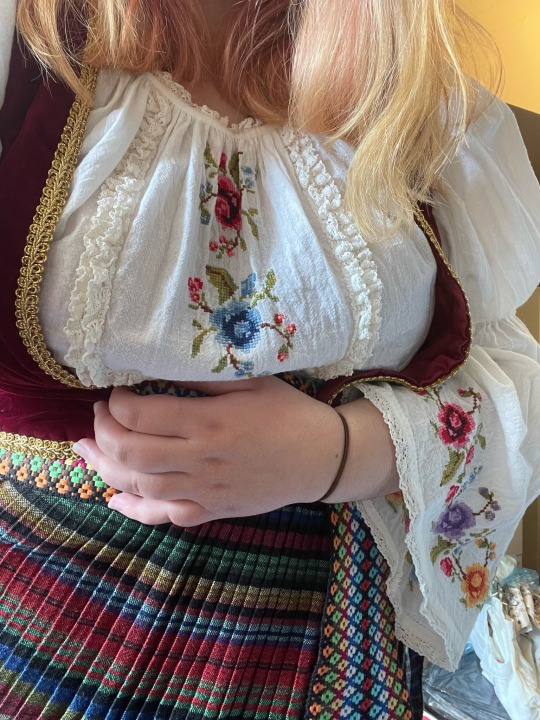

I found this *incomplete* Serbian dress from the Šumadija/Belgrade ( central Serbia) region… I need an apron and a proper Women’s belt to go with it 😂 and maybe a new vest that would fit around my chest properly 😂. Nonetheless, the skirt and blouse are absolutely stunning!
#bulgarian#Bulgarian artist#Serbian#Serbian dress#serbian folklore#sumadija#Belgrade#Bulgarian girl wearing Serbian clothes#I’m a quarter Serbian too#I love tradwear#tradwear#folkclothes#Eastern European#Balkan#balkans#балкан#българия#Србија#Србија ношња#Шумадија#београд#mine#yes#folkwear#embroidery#traditional#cute#Serbia Bulgaria#Serbia x Bulgaria#serbo-bulgarian
15 notes
·
View notes
Text

Woman from Topola, Serbia, 1851.
61 notes
·
View notes
Text

Лозовик, Шумадија
Снимио Ђорђе Станојевић крајем 19. века
#serbia#србија#шумадија#народна ношња#srbija#sumadija#šumadija#slavic#slavic culture#slavic tradition#traditional clothing#19th century#fashion#woman#women#serbian clothing#serbian culture#girl#photography#photo#kachcha
111 notes
·
View notes
Text

Bogutovac, Srbija
#bogutovac#srbija#sumadija#balkan#europe#photography#analog#photographers on tumblr#la vie en rose#original photographers#analog photography#photooftheday#la vie est belle#photography on tumblr#original photography blog#la vita è bella#la vie boheme#la dolce vita#indie#retro#girly#vintage#bohostyle#boho#bohogirl#summer#home#garden#august#family time
40 notes
·
View notes
Photo
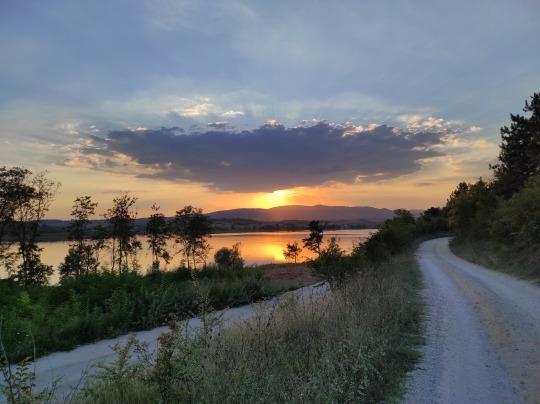
Gruža lake in Serbia.
3 notes
·
View notes

